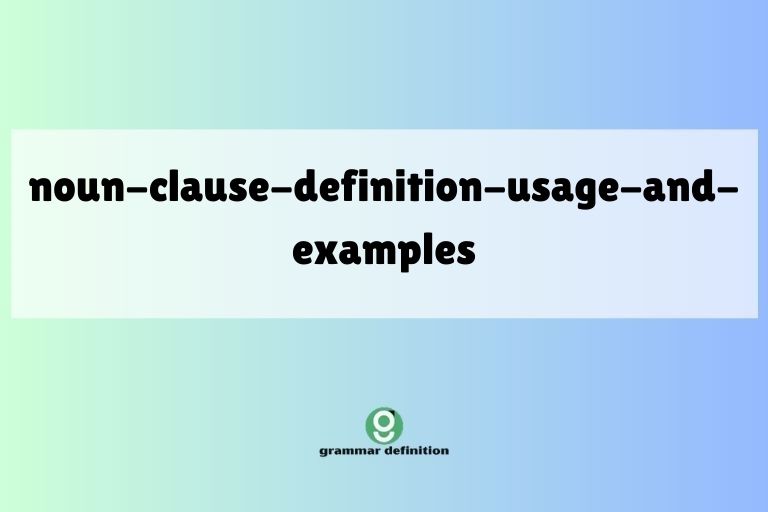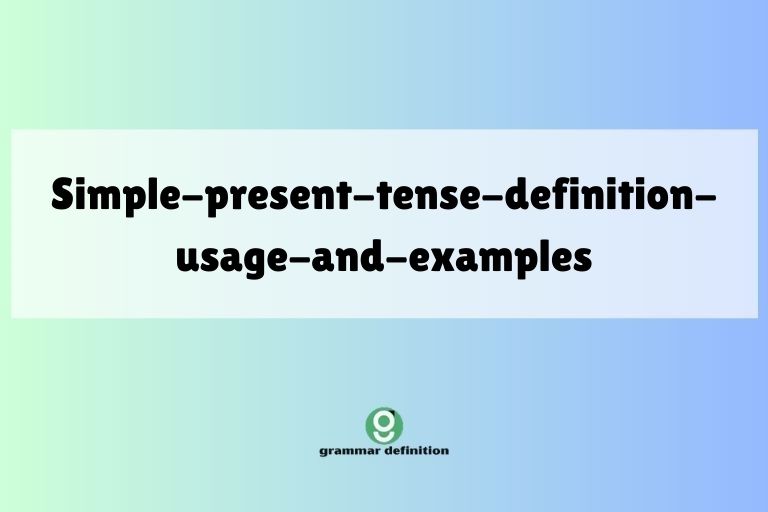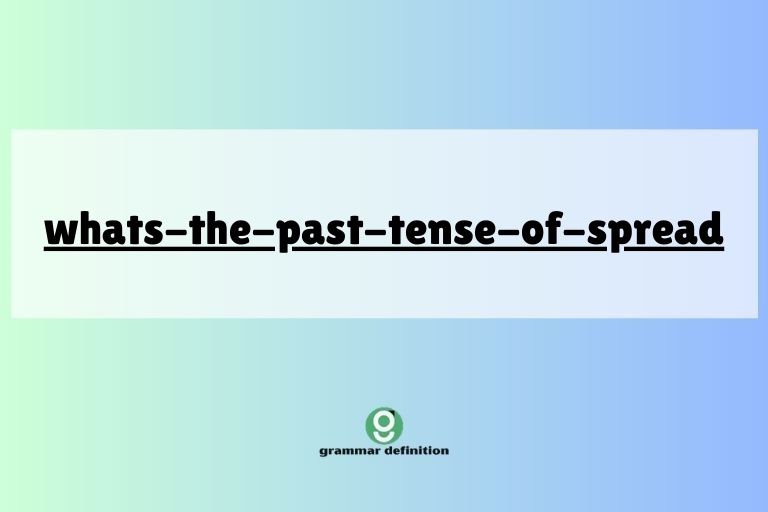Leaned or Leant: Mastering the Past Tense of ‘Lean’

Understanding the past tense forms of irregular verbs can be tricky for English language learners. One such verb is “lean,” which has two acceptable past tense forms: “leaned” and “leant.” Knowing when and how to use each form correctly is essential for clear and accurate communication.
This comprehensive guide will explore the nuances of “leaned” and “leant,” providing definitions, examples, usage rules, and practice exercises to help you master this aspect of English grammar. Whether you’re a beginner or an advanced learner, this article will equip you with the knowledge and skills to confidently use the past tense of “lean.”
Table of Contents
- Introduction
- Definition of ‘Lean’
- Structural Breakdown
- Types of Verb Conjugation
- Examples of ‘Leaned’ and ‘Leant’
- Usage Rules
- Common Mistakes
- Practice Exercises
- Advanced Topics
- FAQ
- Conclusion
Definition of ‘Lean’
The verb “lean” has several meanings, but in this context, we’re focusing on its use to describe the act of inclining or bending from a vertical position. It can also mean to rely on someone or something for support or to rest against something for support.
Understanding the core meaning of “lean” is crucial for grasping the appropriate use of its past tense forms.
In linguistic terms, “lean” is classified as a verb, specifically an intransitive verb when it describes the act of inclining (e.g., “The tower leans”). It can also be a transitive verb when it describes placing something in a leaning position (e.g., “He leaned the ladder against the wall.”).
The past tense forms, “leaned” and “leant,” are used to describe actions that have already occurred.
Structural Breakdown
The verb “lean” is interesting because it exhibits characteristics of both regular and irregular verbs. Regular verbs form their past tense and past participle by adding “-ed” to the base form.
Irregular verbs, on the other hand, have unpredictable past tense and past participle forms. “Lean” offers both possibilities, making it a somewhat unique case.
The standard pattern for forming the past tense involves adding “-ed” to the base form of the verb. This results in “leaned.” However, “lean” also has an alternative past tense form, “leant,” which follows a pattern similar to other irregular verbs like “mean” (meant) and “dream” (dreamt).
The choice between “leaned” and “leant” often depends on regional preferences and stylistic considerations.
Types of Verb Conjugation
Understanding verb conjugation helps clarify the role of “leaned” and “leant.” Verb conjugation refers to the process of changing the form of a verb to indicate tense, person, number, and mood. Here’s how “lean” conjugates:
- Base Form: lean
- Present Tense: lean, leans
- Past Tense: leaned, leant
- Past Participle: leaned, leant
- Present Participle: leaning
The past participle form is used in perfect tenses (e.g., “I have leaned against this wall many times”). Like the simple past tense, the past participle also has two acceptable forms: “leaned” and “leant.” These forms are interchangeable in most contexts, though regional preferences may apply.
Examples of ‘Leaned’ and ‘Leant’
To illustrate the usage of “leaned” and “leant,” let’s examine various examples in different contexts. These examples will highlight the subtle differences and preferences associated with each form.
Examples of ‘Leaned’
The form “leaned” is considered the more regular and generally preferred form in American English. Here are some examples:
The following table presents a variety of sentences using “leaned”. Note the different contexts and subjects that the verb is used with.
| Sentence |
|---|
| He leaned against the doorframe, looking tired. |
| She leaned her bicycle against the fence. |
| The building leaned slightly to the left after the earthquake. |
| I leaned in to hear what she was whispering. |
| They leaned on each other for support during the difficult time. |
| The old woman leaned heavily on her cane. |
| He leaned back in his chair, deep in thought. |
| She leaned forward, eager to hear the news. |
| The child leaned his head against the window. |
| We leaned our shovels against the shed. |
| The tree leaned precariously over the road. |
| He leaned his elbow on the table. |
| She leaned her head on his shoulder. |
| The picture frame leaned against the wall. |
| The student leaned over to copy from his neighbor’s test. |
| The drunk man leaned against the lamppost for support. |
| She leaned into the microphone to speak more clearly. |
| He leaned his weight against the stubborn door. |
| The model leaned gracefully against the antique car. |
| The tired hiker leaned on his walking stick. |
| The cat leaned against my leg, purring loudly. |
| The sign leaned against the wall because it was missing a bracket. |
| He leaned his head back and closed his eyes, enjoying the sun. |
Examples of ‘Leant’
The form “leant” is more commonly used in British English. While it’s not incorrect in American English, it’s less frequently encountered.
Here are some examples:
The following table presents a variety of sentences using “leant”. Note the different contexts and subjects that the verb is used with.
These examples tend to be more common in British English.
| Sentence |
|---|
| He leant against the wall, waiting for the bus. |
| She leant her umbrella against the door. |
| The ladder leant against the building. |
| I leant forward to catch his words. |
| They leant on each other for comfort. |
| The old tree leant at a dangerous angle. |
| He leant back and sighed. |
| She leant in to whisper a secret. |
| The child leant his toy against the cushion. |
| We leant our bikes against the fence. |
| The tower leant noticeably after the storm. |
| He leant his fishing rod against the rocks. |
| She leant her head on the window, watching the rain. |
| The artwork leant casually against the shelf. |
| The tourist leant over the railing to take a photo. |
| The weary traveler leant against his backpack. |
| She leant closer to hear the speaker. |
| He leant his full weight against the heavy box. |
| The model leant seductively against the sports car. |
| The exhausted climber leant heavily on his ice axe. |
| The puppy leant against its mother for warmth. |
| The forgotten sign leant against the shop window. |
| He leant his head back to gaze at the stars. |
Examples in Context
To further illustrate the usage, here are some examples showcasing both forms in similar contexts:
This table compares sentences using both “leaned” and “leant” to show how they can be used interchangeably, although regional preferences exist.
| Sentence with ‘Leaned’ | Sentence with ‘Leant’ |
|---|---|
| He leaned against the counter while waiting for his coffee. | He leant against the counter while waiting for his coffee. |
| She leaned her head on her hand, looking bored. | She leant her head on her hand, looking bored. |
| The old fence leaned to one side. | The old fence leant to one side. |
| I leaned closer to hear the speaker. | I leant closer to hear the speaker. |
| They leaned on each other for support. | They leant on each other for support. |
| The tower leaned more after the recent tremors. | The tower leant more after the recent tremors. |
| He leaned back in his chair, stretching. | He leant back in his chair, stretching. |
| She leaned forward to get a better view. | She leant forward to get a better view. |
| The child leaned his bike against the tree. | The child leant his bike against the tree. |
| We leaned our shovels against the shed wall. | We leant our shovels against the shed wall. |
As you can see, the meaning remains the same regardless of which form you use. The choice often comes down to personal preference or regional dialect.
Usage Rules
While both “leaned” and “leant” are acceptable past tense forms of “lean,” there are some general guidelines to follow:
- American English: “Leaned” is generally preferred and more commonly used.
- British English: “Leant” is more common, though “leaned” is also acceptable.
- Consistency: Choose one form and stick with it within a single piece of writing to maintain consistency.
- Formality: “Leant” may be perceived as slightly more formal or archaic, though this is a subtle distinction.
It’s also important to note that these are general tendencies rather than strict rules. You may encounter “leant” in American English and “leaned” in British English, especially in literature or more formal contexts.
Common Mistakes
One common mistake is using “lean” as the past tense form. Remember that “lean” is the base form of the verb and should not be used to describe past actions.
Another mistake is misspelling “leant” as “lent,” which is the past tense of “lend” (to give something temporarily). Here are some examples of correct and incorrect usage:
This table highlights common errors when using the past tense of “lean” and provides the correct forms.
| Incorrect | Correct |
|---|---|
| He lean against the wall. | He leaned against the wall. / He leant against the wall. |
| She lent her bicycle against the fence. | She leaned her bicycle against the fence. / She leant her bicycle against the fence. |
| The building lean to the left. | The building leaned to the left. / The building leant to the left. |
| I was lean on the table. | I leaned on the table. / I leant on the table. |
| They has lean on each other. | They have leaned on each other. / They have leant on each other. |
Pay close attention to the spelling and tense when using the past tense of “lean” to avoid these common errors.
Practice Exercises
To solidify your understanding of “leaned” and “leant,” try these practice exercises. Each exercise focuses on different aspects of using these verb forms correctly.
Exercise 1: Fill in the Blanks
Fill in the blanks with the correct past tense form of “lean” (either “leaned” or “leant”). Choose the form that sounds most natural to you, keeping in mind regional preferences.
This exercise provides sentences with blanks where the student must fill in the correct form of the past tense of “lean.” An answer key is provided below the table.
| Sentence | Answer |
|---|---|
| 1. He ______ his bicycle against the tree. | leaned/leant |
| 2. She ______ forward to hear the secret. | leaned/leant |
| 3. The tower ______ slightly after the earthquake. | leaned/leant |
| 4. I ______ on the railing, enjoying the view. | leaned/leant |
| 5. They ______ on each other for support. | leaned/leant |
| 6. The picture frame ______ against the wall. | leaned/leant |
| 7. The drunk man ______ against the lamppost. | leaned/leant |
| 8. She ______ into the microphone to speak. | leaned/leant |
| 9. He ______ his weight against the door. | leaned/leant |
| 10. The hiker ______ on his walking stick. | leaned/leant |
Answer Key: All blanks can be correctly filled with either “leaned” or “leant.”
Exercise 2: Sentence Correction
Identify and correct any errors in the following sentences. If the sentence is correct, write “Correct.”
This exercise requires the student to identify and correct errors in sentences using “lean” in the past tense. An answer key is provided below the table.
| Sentence | Corrected Sentence |
|---|---|
| 1. He lean against the wall. | He leaned against the wall. / He leant against the wall. |
| 2. She leant her umbrella by the door. | Correct |
| 3. The building leaned dangerously. | Correct |
| 4. I have lean on him for support. | I have leaned on him for support. / I have leant on him for support. |
| 5. They has leaned on each other. | They have leaned on each other. / They have leant on each other. |
| 6. She lend her bike against the fence. | She leaned her bike against the fence. / She leant her bike against the fence. |
| 7. He leant back and closed his eyes. | Correct |
| 8. The child leaned his head on the table. | Correct |
| 9. We had lean our shovels against the wall. | We had leaned our shovels against the wall. / We had leant our shovels against the wall. |
| 10.The picture was lean against the books. | The picture was leaning against the books. |
Exercise 3: Paragraph Completion
Complete the following paragraph using either “leaned” or “leant” in the appropriate places. Choose the form that you prefer and maintain consistency throughout the paragraph.
This exercise challenges the student to use the past tense of “lean” consistently within a paragraph. A possible answer is provided below the table, but other variations using the alternative past tense form are also correct as long as they are consistent.
| Paragraph |
|---|
| The old man ______ heavily on his cane as he walked down the street. He ______ against a lamppost to catch his breath. He ______ back and looked up at the sky, a wistful expression on his face. He ______ there for a few moments, lost in thought, before continuing on his way. He ______ over to pick up a fallen leaf, examining it closely before letting it fall again. |
Possible Answer: The old man leaned heavily on his cane as he walked down the street. He leaned against a lamppost to catch his breath. He leaned back and looked up at the sky, a wistful expression on his face. He leaned there for a few moments, lost in thought, before continuing on his way. He leaned over to pick up a fallen leaf, examining it closely before letting it fall again.
Advanced Topics
For advanced learners, it’s helpful to understand the nuances of regional differences and stylistic choices when using “leaned” and “leant.”
Regional Differences
As mentioned earlier, “leaned” is generally preferred in American English, while “leant” is more common in British English. This difference is not a strict rule, but rather a statistical tendency.
You’re more likely to encounter “leaned” in American publications and conversations, and “leant” in British ones.
This regional variation extends to other verbs with similar alternative past tense forms, such as “dreamed” and “dreamt,” “burned” and “burnt,” and “learned” and “learnt.” Understanding these regional preferences can help you better understand and appreciate the diversity of the English language.
Formal vs. Informal Usage
While both “leaned” and “leant” are acceptable in formal writing, some might perceive “leant” as slightly more formal or archaic. However, this is a subtle distinction, and the choice often comes down to personal preference.
In informal contexts, both forms are equally acceptable.
In academic writing, consistency is key. Choose one form and use it consistently throughout your paper.
If you’re writing for a specific audience (e.g., a British publication), consider the regional preferences of that audience.
FAQ
Here are some frequently asked questions about the past tense of “lean”:
- Is “leant” wrong?
No, “leant” is not wrong. It is an acceptable past tense and past participle form of “lean,” particularly in British English.
- Which form should I use, “leaned” or “leant”?
If you are writing in American English, “leaned” is generally preferred. If you are writing in British English, “leant” is more common. Consistency is key, so choose one form and stick with it.
- Is there a difference in meaning between “leaned” and “leant”?
No, there is no difference in meaning. Both forms convey the same action of inclining or resting against something in the past.
- Can I use “leant” in American English?
Yes, you can use “leant” in American English, but it is less common and may sound slightly formal or archaic to some speakers.
- Is “lean” ever used as a past tense form?
No, “lean” is the base form of the verb and should not be used as a past tense form. The correct past tense forms are “leaned” and “leant.”
- Is “lent” the past tense of “lean”?
No, “lent” is the past tense of “lend,” which means to give something temporarily. “Leaned” and “leant” are the past tense forms of “lean,” which means to incline or rest against something.
- Are there other verbs with similar alternative past tense forms?
Yes, many other verbs have similar alternative past tense forms, such as “dreamed” and “dreamt,” “burned” and “burnt,” “learned” and “learnt,” “spilled” and “spilt,” and “smelled” and “smelt.”
- How can I remember which form to use?
If you’re unsure, “leaned” is generally a safe choice, as it is widely accepted in both American and British English. If you want to sound more British, “leant” is a good option. Ultimately, the best approach is to be consistent and choose the form that sounds most natural to you.
Conclusion
Mastering the past tense forms of verbs like “lean” is crucial for effective communication in English. While both “leaned” and “leant” are acceptable, understanding their regional preferences and usage rules will help you make informed choices and avoid common mistakes.
Remember that “leaned” is generally preferred in American English, while “leant” is more common in British English. Consistency is key, so choose one form and stick with it in your writing.
By practicing with examples and exercises, you can confidently use “leaned” and “leant” in various contexts. Pay attention to the spelling and tense to avoid errors, and consider your audience when making your choice.
With a solid understanding of these nuances, you’ll be well-equipped to navigate the complexities of English grammar and communicate with clarity and precision.






